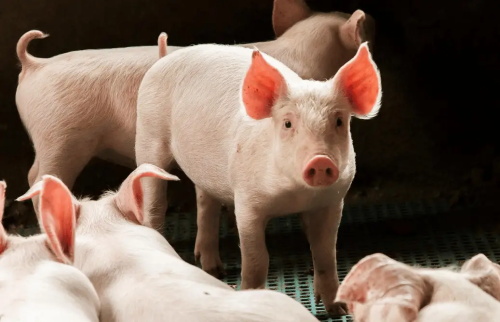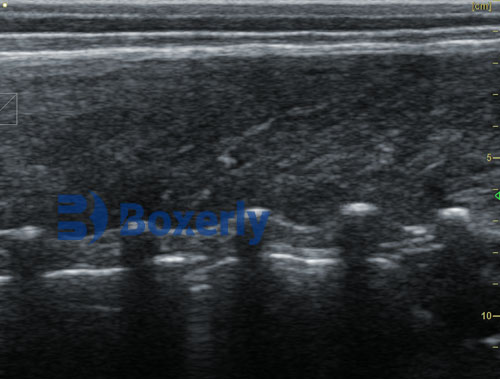In the modern era of livestock farming, monitoring reproductive health and improving productivity are essential components for success. For swine production, understanding the impact of nutrition on sow fertility is critical. This article explores how nutritional restriction affects the development of ovarian follicles in sows, with particular focus on the application of ultrasound technology to observe these physiological changes. Ultrasonography has become an invaluable tool for evaluating the reproductive status of pigs and plays a crucial role in optimizing breeding practices.

Understanding Nutritional Restriction and Its Effects on Sow Reproduction
Nutritional management is one of the most influential factors in determining the reproductive success of sows. For pre-pubertal gilts (young female pigs), restricted feeding can have significant consequences on the onset of estrus, follicle development, and overall reproductive performance. Studies have demonstrated that nutritional restriction can delay the age at first estrus, which is a key milestone in the sow’s reproductive lifecycle. Specifically, when gilts are subjected to a 50% reduction in their ad libitum feed intake, the onset of puberty can be delayed by as much as 16 Días.
One of the primary ways to observe the effects of nutritional restriction is through the use of ultrasound imaging. Ultrasound allows for real-time observation of ovarian structures, particularly the development of dominant follicles. In gilts undergoing nutritional restriction, ultrasound reveals a delayed appearance of these dominant follicles, further supporting the notion that restricted nutrition impedes normal reproductive function.
The Role of Ultrasound in Monitoring Ovarian Follicle Development
Ultrasonography provides a non-invasive method for assessing the health and development of ovarian follicles in sows. Using B-mode ultrasound, veterinarians can observe the size, number, and maturation of follicles. In the case of nutritional restriction, Imágenes de ultrasonido clearly shows a delayed appearance of dominant follicles, which are crucial for ovulation and successful conception.
When compared to gilts that are fed ad libitum, those on restricted diets show a noticeable delay in follicle development. This delay can be attributed to the negative effects of poor nutritional status on hormonal regulation, particularly on the secretion of gonadotropins, which are essential for follicle maturation and ovulation. As a result, the follicles in restricted-fed gilts often remain smaller for longer periods, which could ultimately reduce the chances of successful breeding.

The Relationship Between Feeding Levels and Puberty Onset
The timing of puberty in gilts is highly dependent on their nutritional status. The age at which a gilt experiences its first estrus is an important indicator of reproductive efficiency. Research indicates that higher feeding levels during the early stages of development accelerate the onset of puberty. Por ejemplo, if gilts are fed at 2.7 times their maintenance requirement, puberty may occur earlier than expected.
Sin embargo, excessively high feeding levels, especially during the finishing phase or before mating, can have negative consequences on fertility. When gilts are fed at levels exceeding 2.5–3.0 times the maintenance requirement, there is a significant reduction in fertility rates. This is often observed in the form of lower conception rates and higher instances of empty sows during ultrasound evaluations. On the contrary, moderately restricted feeding levels—around 1.8 Para 2.1 times the maintenance requirement—can help strike a balance between ensuring adequate body condition and maintaining optimal salud reproductiva.
Critical Weight Thresholds and Their Impact on Reproductive Performance
The weight and body condition of gilts play a pivotal role in the timing of puberty and the subsequent fertility outcomes. When the body weight of gilts is below a critical threshold of 61 kg, the onset of puberty is often significantly delayed. Even when feeding is subsequently increased to ad libitum levels in the later stages of growth, the negative effects on puberty onset persist, as evidenced by the delayed development of ovarian follicles observed through ultrasound scans.
En contraste, gilts that maintain an optimal weight during the growing phase—neither too lean nor excessively overweight—tend to experience earlier and more synchronized estrus cycles. Ultrasound can effectively track these changes, providing farmers with the ability to adjust feeding strategies in real-time to ensure that gilts reach the ideal body weight and reproductive readiness.
Balancing Nutrition and Reproductive Efficiency
Achieving a balance between adequate nutrition and reproductive performance is essential for maximizing sow productivity. As mentioned, both underfeeding and overfeeding can disrupt normal reproductive function. The goal is to provide sufficient nutrition that supports healthy follicular development, while avoiding excessive fat deposition that could impair fertility. Ultrasound technology assists farmers by providing a detailed and timely picture of ovarian follicle development, allowing for more informed decision-making regarding feeding protocols.
Además, moderate nutritional restriction has been shown to have beneficial effects on the overall health and longevity of sows. By controlling body weight and preventing excessive fat accumulation, farmers can ensure that sows remain productive for a longer period, which is economically beneficial for the farm.

Advantages of Using Ultrasound Technology in Swine Reproduction
The use of ultrasound in swine reproduction provides numerous advantages. Primero, it is a non-invasive, stress-free method that does not interfere with the natural development of the animal. Second, ultrasound provides real-time, accurate data that can be used to monitor follicle development and make timely decisions about breeding and management.
The key benefits of ultrasound in monitoring sow reproduction include:
-
Early Detection of Follicular Development: Ultrasound helps detect follicle size and maturity, which is essential for determining the optimal breeding time.
-
Identification of Delayed or Abnormal Follicle Development: By observing delayed follicular growth in restricted-fed sows, farmers can adjust their feeding strategies to promote more efficient reproductive outcomes.
-
Monitoring of Pregnancy: After breeding, ultrasound can also be used to confirm pregnancy, assess fetal development, and detect early signs of reproductive issues.
-
Minimizing Economic Loss: By improving reproductive efficiency, ultrasound helps reduce culling rates and increases the overall profitability of the farm.
Conclusión
En conclusión, nutritional management plays a crucial role in the reproductive success of sows. Nutritional restriction, particularly during the growing phase, can delay the onset of puberty and hinder ovarian follicle development, negatively impacting fertility. Ultrasound imaging provides valuable insights into these physiological changes, allowing farmers to adjust feeding strategies and improve reproductive outcomes.
By understanding the complex relationship between nutrition and reproduction, and using ultrasound as a tool for monitoring follicle development, farmers can optimize breeding practices and ensure higher productivity. As the swine industry continues to evolve, the adoption of advanced technologies like ultrasound will undoubtedly play a significant role in enhancing reproductive efficiency and profitability.